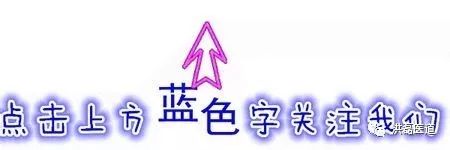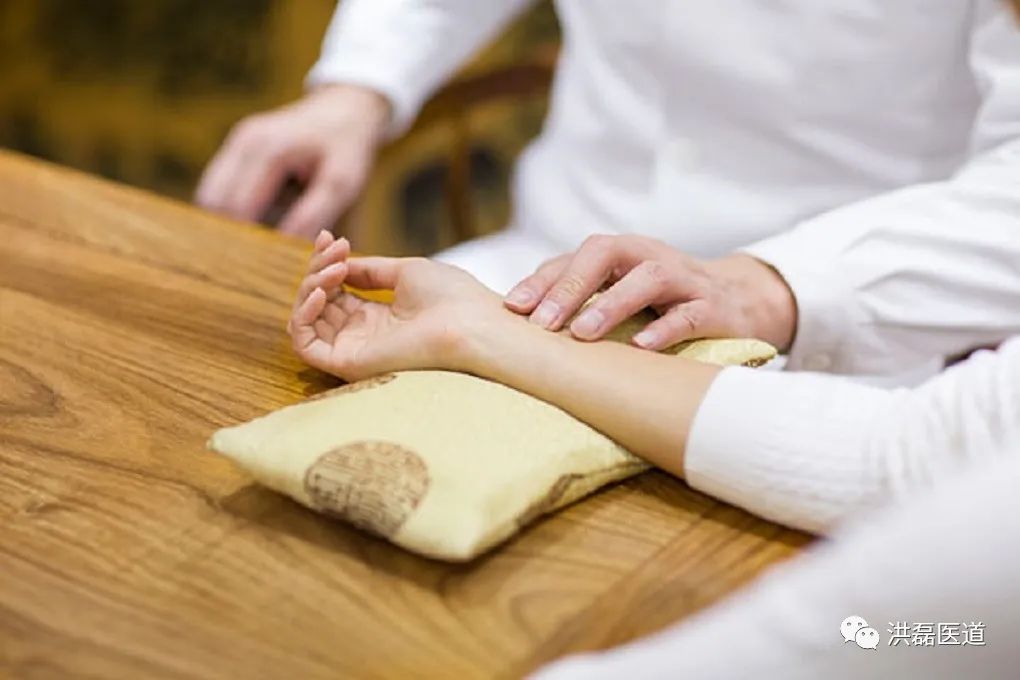
Comprehensive Guide to TCM Pulse Diagnosis (Recommended for Collection and Repeated Study)
Comprehensive Guide to TCM Pulse Diagnosis
Floating Pulse (Fu Mai): Lightly pressing, if it disappears with heavy pressure, it is like wood floating on water. A strong floating pulse indicates wind-heat, while a weak floating pulse suggests blood deficiency.
Deep Pulse (Chen Mai): Pressing heavily reveals the pulse, like a stone sinking in water. A strong deep pulse indicates cold pain, while a weak deep pulse suggests deficiency-cold.
Slow Pulse (Chi Mai): A slow pulse comes once every three breaths, extremely slow and should be noted. A slow pulse indicates organ disease or excess cold, requiring careful analysis between deficiency and excess.
Rapid Pulse (Shuo Mai): A rapid pulse comes six times per breath, and should be noted for its quickness. Distinguish between floating and deep, deficiency and excess, as the treatment differs for the monarch and ministerial fire.
Weak Pulse (Xu Mai): A weak pulse is formless and lacks strength, large and soft without root. A weak pulse with body heat indicates middle-heat, while a deficiency of qi leads to weakness.
Full Pulse (Shi Mai): A full pulse is large and long, with three positions filled with strength. A full pulse in a new illness indicates strong pathogenic qi, while in a chronic illness, it indicates misfortune.
Slippery Pulse (Hua Mai): A slippery pulse is difficult to interpret, like beads rolling on a plate. It indicates fullness of food and phlegm-heat in the chest, and in women, it should be adjusted during pregnancy.
Choppy Pulse (Se Mai): A choppy pulse resembles bamboo scraping, thin, slow, and stagnant, as if wanting to stop. It indicates blood deficiency, dryness of fluids, and qi stagnation, and in women, it suggests non-pregnancy or absence of menstruation.
Surging Pulse (Hong Mai): A surging pulse is full and wave-like, though it may be strong upon arrival, it leaves gently. A surging pulse indicates the progression of disease and strong pathogenic qi, making treatment difficult.
Minute Pulse (Wei Mai): A minute pulse is like a thread, barely felt. It indicates severe deficiency and chronic illness, with difficulty in recovery.
Tight Pulse (Jin Mai): A tight pulse is like a rope, tense and urgent, indicating pain from cold injury. Distinguish between floating and deep for accurate diagnosis.
Slow Pulse (Huan Mai): A slow pulse comes four times, indicating a calm and gentle nature. It may be due to spleen deficiency or wind-dampness, requiring careful evaluation.
Soft Pulse (Ru Mai): A soft pulse is floating, delicate, and weak, like cotton floating on water. It may be seen postpartum, but in healthy individuals, it indicates concern.
Weak Pulse (Ruo Mai): A weak pulse is soft and delicate, like cotton in water, indicating deficiency of yang and blood. It is acceptable in the elderly but should be avoided in the young.
Long Pulse (Chang Mai): A long pulse is extended and exceeds its normal position, soft upon pressing. A long pulse indicates strong heart and kidney roots, while a long and hard pulse indicates fire pathology.
Short Pulse (Duan Mai): A short pulse is contracted, like a turtle, indicating difficulty in treatment due to deficiency of true yuan qi.
Hollow Pulse (Kao Mai): A hollow pulse is empty in the middle, soft like scallions. It indicates fire invading the yang channels and blood overflowing, leading to heat damaging the yin.
String-like Pulse (Xian Mai): A string-like pulse is straight and taut, resembling a guitar string. It indicates liver and gallbladder issues, with pain from phlegm and fluid.
Scattered Pulse (San Mai): A scattered pulse is floating and chaotic, gradually disappearing upon pressing. It indicates a sign of birth or miscarriage, and in chronic illness, it suggests a desire to escape.
Thin Pulse (Xi Mai): A thin pulse is as fine as a line, extremely thin upon pressing. It indicates excessive worry and qi-blood deficiency, often seen with dampness.
Hidden Pulse (Fu Mai): A hidden pulse requires careful searching, pressing down to feel the sinews and bones. It indicates qi stagnation, cold accumulation, and food blockage, leading to nausea.
Moving Pulse (Dong Mai): A moving pulse is rapid and irregular, with no head or tail, indicating pain and shock. It is particularly concerning in cases of pregnancy.
Leather-like Pulse (Ge Mai): A leather-like pulse is floating and tense, resembling a taut drum skin. It indicates postpartum issues in women and deficiency in men.
Firm Pulse (Lao Mai): A firm pulse is deep and strong, indicating internal accumulation and cold pain, leading to misfortune.
Rapid Pulse (Cu Mai): A rapid pulse is quick and stops intermittently, like a horse galloping. It indicates severe heat and loss of fluids, with urgent symptoms.
Knotted Pulse (Jie Mai): A knotted pulse is slow and stops intermittently, indicating cold accumulation and emotional distress.
Intermittent Pulse (Dai Mai): An intermittent pulse stops and resumes, indicating chronic illness and difficulty in treatment, particularly in pregnant women.
Fast Pulse (Ji Mai): A fast pulse is rapid and agitated, indicating severe yang excess and depletion of true yin, leading to critical conditions.

TCM Diagnostic Verses
Cold and Heat:
Exterior Cold Syndrome: Cold damage with fever, nasal congestion, no sweating, and tight cough. Pulse is floating and slow, with stiff neck and headache.
Exterior Heat Syndrome: Exterior heat with heavy fever and mild cold, slight thirst, sweating, and red swollen throat. Pulse is floating and rapid, with red tongue and yellow coating.
Interior Heat Excess Syndrome: High fever with agitation, thirst for cold drinks, abdominal pain with tenderness, and dark urine. Pulse is deep and rapid, with yellow tongue coating.
Interior Cold Deficiency Syndrome: Abdominal fullness and pain, vomiting clear fluids, and shortness of breath. Pulse is deep and slow, with pale tongue and white coating.
Cold Syndrome: Pale face, fear of cold, curled up posture, and clear urine. Pulse is slow and weak, with pale tongue.
Heat Excess Syndrome: High fever with red face, sweating, and thirst for cold. Pulse is rapid and strong, with red tongue and yellow coating.
Deficiency Heat Syndrome: Bone steaming with five hearts feeling hot, night sweats, fatigue, and insomnia. Pulse is thin and rapid, with red tongue and no coating.
Mixed Cold and Heat (Upper Heat, Lower Cold): Upper heat with chest discomfort and phlegm, mouth sores, and abdominal pain with diarrhea.
Upper Cold, Lower Heat: Upper cold with stomach pain, vomiting clear fluids, and lower abdominal distension with pain.
Interior Cold, Exterior Heat: History of edema, fear of cold, and diarrhea. Recurrent exterior heat with thirst and sore throat.
Interior Heat, Exterior Cold: History of heat with agitation, constipation, and body aches. Followed by fever and aversion to wind.
True Heat, False Cold: True heat with pale complexion and cold extremities, thirst for cold drinks, red tongue with yellow coating.
True Cold, False Heat: Cold body with false heat, pale tongue, and clear urine. True heat with thirst and rapid pulse.
Deficiency and Excess:
Deficiency Syndrome: Thin body with low energy, palpitations, shortness of breath, and sweating. Yin deficiency may show five hearts feeling hot, while yang deficiency shows pale complexion and cold extremities.
Excess Syndrome: Qi stagnation with agitation, abdominal distension, and phlegm. Difficulty in defecation and painful urination, with red tongue and thick coating.
Upper Excess, Lower Deficiency: Upper excess with cough and phlegm, chest and abdominal distension, while lower deficiency shows edema and cold extremities.
Upper Deficiency, Lower Excess: Upper deficiency with heart and lung insufficiency, while lower excess shows damp-heat accumulation.
Exterior and Interior:
Interior Deficiency, Exterior Excess: Reduced appetite, abdominal fullness, and pain. Cold and fever with body aches, indicating yang deficiency with external invasion.
True Excess, False Deficiency: Internal excess with external false deficiency, thin body, and fatigue. Abdominal pain with fullness, indicating true excess.
True Deficiency, False Excess: True deficiency with abdominal fullness, pain relieved by pressure. Thick tongue and thin pulse indicate danger.
Yin and Yang:
1) Yin Syndrome: Pale face, cold extremities, fatigue, and low voice. Clear urine and loose stools, with pale tongue and slow pulse.
2) Yang Syndrome: Energetic with coarse voice, red face, and rapid breathing. High fever, yellow urine, and constipation, with red tongue and rapid pulse.
3) Yin Deficiency with Internal Heat: Red cheeks, night sweats, and insomnia. Five hearts feeling hot, thin and rapid pulse, with red tongue and no coating.
4) Yang Deficiency with External Cold: Pale face, cold extremities, fatigue, and low pulse. Cold body with frequent urination and weakness.
5) Blood Loss and Dehydration: Dry mouth, preference for cold, and sticky sweat. Red tongue and weak pulse, with flushed face and heat intolerance.
6) Yang Collapse: Cold extremities, excessive sweating, and weak pulse. Pale tongue and weak breath indicate critical condition.
Qi Deficiency: Qi deficiency leads to weak organ function, shortness of breath, fatigue, and low appetite. Palpitations, muscle weakness, and dark vision may occur.
Qi Stagnation: Qi stagnation leads to distension and pain, with varying intensity. Symptoms may include fullness in the chest, cough, and back pain.
Qi Reversal: Qi reversal affects the lungs, leading to cough and shortness of breath. Symptoms may include nausea, dizziness, and fainting.
Blood Deficiency: Pale complexion, weak pulse, and insomnia. Symptoms may include dizziness, fatigue, and numbness.
Blood Heat: High fever, insomnia, and skin rashes. Symptoms may include red tongue and rapid pulse.
Blood Stasis: Swelling and pain in specific areas, with varying intensity. Symptoms may include dark complexion and purple tongue.
Qi Stagnation and Blood Stasis: Qi stagnation leads to liver depression, with symptoms including irritability and menstrual irregularities.
Qi and Blood Deficiency: Symptoms include dizziness, fatigue, and pale complexion. Weak pulse and frequent sweating may occur.
Qi Deficiency with Blood Loss: Symptoms include fatigue, pale complexion, and weakness. May lead to bleeding and frequent urination.
Copyright Notice: We emphasize sharing; if there are any objections, please inform the editor, and we will delete it promptly.
Please share this article to let more people see it.
Promote TCM culture.
Spread TCM knowledge.
Let us practice together.

Scan the QR code to follow Hong Lei Medical Path. Welcome to follow.

